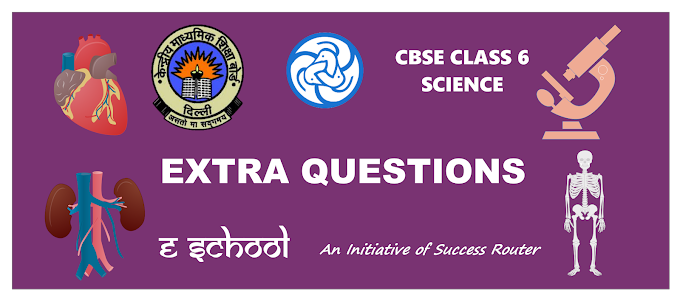Here we have given NCERT Solutions for Class 6 Science Chapter 6 Changes Around us.
| Board | CBSE |
| Textbook | NCERT |
| Class | Class 6 |
| Subject | Science |
| Chapter | Chapter 6 |
| Chapter Name | Changes Around us |
| Number of Questions Solved | 7 |
| Category | NCERT Solutions |
NCERT Solutions for Class 6 Science Chapter 6 Changes Around us
NCERT TEXTBOOK EXERCISES
(Page 51)
Question 1.
To walk through a waterlogged area, you usually shorten the length of your dress by folding it. Can this change be reversed?
Answer :
Yes. This can be reversed by unfolding the folded clothes.
Question 2.
You accidentally dropped your favourite toy and broke it. This is a change you did not want. Can this change be reversed?
Answer :
No. This change cannot be reversed. Breaking of a toy is an irreversible change.
Question 3.
Some changes are listed in the following table. For each change, write in the blank column, whether the change can be reversed or not.
| S.No. | Change | Can be reversed (Yes/No) |
| 1. | The sawing of a piece of wood | |
| 2. | The melting of ice candy | |
| 3. | Dissolving sugar in water | |
| 4. | The cooking of food | |
| 5. | The ripening of a mango | |
| 6. | Souring of milk |
Answer :
| S.No. | Change | Can be reversed (Yes/No) |
| 1. | The sawing of a piece of wood | No |
| 2. | The melting of ice candy | Yes |
| 3. | Dissolving sugar in water | Yes |
| 4. | The cooking of food | No |
| 5. | The ripening of a mango | No |
| 6. | Souring of milk | No |
Question 4.
A drawing sheet changes when you draw a picture on it. Can you reverse this change?
Answer :
No. We cannot reverse this change. Because we cannot get fresh drawing sheet once a picture is drawn on it. But if the pencil is used to draw the picture, we can reverse the change.
Question 5.
Give examples to explain the difference between changes that can or cannot be reversed.
Answer :
One way we can group changes is to see if they can be reversed or not.
- Changes that can be reversed: In such changes, we can return back to original position if the cause of change is withdrawn; for example,
- heating of milk,
- drying of clothes,
- knitting a sweater,
- streching a rubber band,
- melting of ice, etc.
- Changes that cannot be reversed: The changes in which we cannot go back to original position, even if we withdraw the cause of change; for example,
- boiling of egg,
- making curd from milk,
- making flour from grain,
- flowering of a bud,
- producing biogas from cow dung, etc.
Question 6.
A thick coating of a paste of Plaster of Paris (POP) is applied over the bandage on a fractured bone. It becomes hard on drying to keep the fractured bone immobilised. Can the change in POP be reversed?
Answer :
No. Because it is an irreversible change (i.e., chemical change).
Question 7.
A bag of cement lying in the open gets wet due to rain during the night. The next day the sun shines brightly. Do you think the changes, which have occurred in the cement, could be reversed?
Answer :
No. Because these are irreversible chemical changes.
We hope the NCERT Solutions for Class 6 Science Chapter 6 Changes Around us help you. Don't forget to check out the other solutions as well.

0 Comments